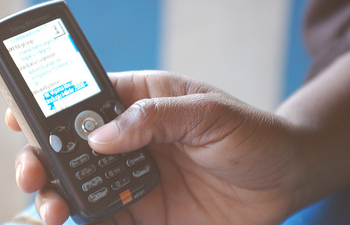Smartphones are ushering in the next wave of news consumption. These devices present an exciting opportunity for the news media to go mobile, putting endless information and the possibility of engagement in the palm of every consumer’s hand.
But what characterizes the new mobile news consumer? How does he or she interact with news? And how can that shape the still-forming mobile news medium? I’ve laid out several key characteristics of mobile news consumers below. News organizations need to keep these basic truths in mind when developing apps and mobile sites.
Key Characteristics of Mobile News Consumers
1. They are impulse users.
Smartphone owners actively seek out bits of news throughout the day. Whether they are at the office, in a crowded bar, or in the comfort of their own home, the impulsive user wants to quickly open an app or browser on their mobile phone and, within seconds, have up-to-the-minute news. While some users are willing to spend time on longer reads, the majority are still looking for the latest, bite-sized chunks of news.
2. They’re demanding.
Mobile news consumers invested in their devices as well as their monthly phone and data plans. They have paid good money for up-to-the-minute
access, and that’s what they expect the news media to deliver. The emergence of this on-the-go, impulsive, and demanding user means mobile news applications and websites need to adopt clean interfaces and offer powerful search functionality. The demanding nature of mobile news consumers also helps explain the growing popularity of news aggregator apps like the Pulse News Reader. These aggregators pull together top stories from users’ favorite sites and offer the option to read a clean text summary of the story or go to the original article. Considering the mobile users’ need for speed, news aggregator apps save consumers not only the time it takes to visit each site separately, but also the time it takes to read full articles.
3. They consume and contribute.
The next step in mobile news will be less about consumption and more about contribution and collaboration. Smartphones give users the opportunity to post video, images, and text to the Internet in seconds. Mobile apps like Qik and CNN’s iReport currently provide some of the most visible venues for mobile users to post news as it happens. Plus, citizen-documented news is appearing on blogs, social networking sites, and YouTube. The ability for anyone to report breaking news means news organizations need to evolve further, shifting from working for the news consumer to working with the news consumer.
4. They are on multiple platforms.
The lack of a cross-platform app strategy is a stumbling block for some news outlets. News outlets and app creators need to make certain their news apps are available on all major platforms. Android is still not a priority for many news outlets, despite the fact it has more than 300,000 new activations daily and has now overtaken rivals such as RIM and Apple in U.S. smartphone market share. Similarly, Nokia’s Symbian platform must stay on app makers’ radar, given its massive installed base and large international penetration, with more than 450 million active devices.
5. They don’t mind a little push
Traditional news outlets like CNN have catered to the new expectations of smartphone users by integrating push notifications into their apps. When major breaking news hits, CNN can push the story to a user’s home screen, regardless of whether the app is open. The key is to use the push feature wisely. Many smartphone users will uninstall your app if you push too often for the wrong reasons. This is a balancing act that news organizations must pay attention to.
Patrick Mork is chief marketing officer of GetJar, the world’s largest open mobile platform. He heads the company’s overall marketing, branding, content and communications strategy. Prior to joining GetJar, he was marketing director EMEA at glu, where he built up the company’s marketing team and helped establish glu as one of the top 3 games publishers in Europe. A former marketer at PepsiCo, Patrick has worked in venture-backed start-ups in marketing, sales and general management for the past 10 years. He holds an MBA from INSEAD and a Bachelor of Science from Georgetown University.

